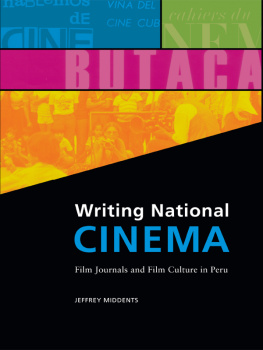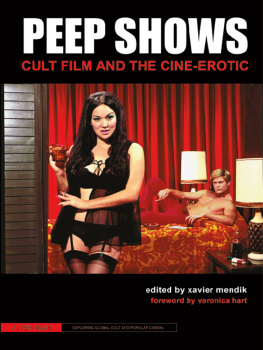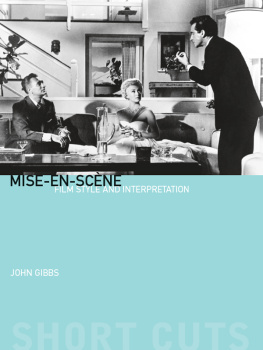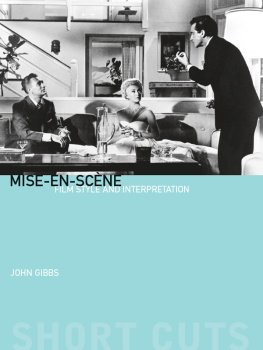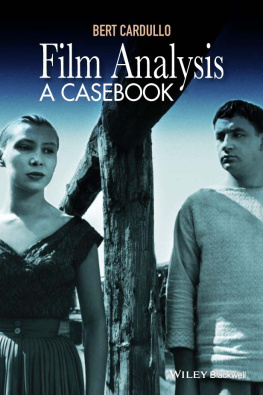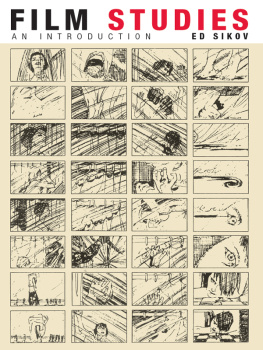Interfaces: Studies in Visual Culture
Editors Mark J. Williams and Adrian W. B. Randolph,
Dartmouth College
This series, sponsored by Dartmouth College Press, develops and promotes the study of visual culture from a variety of critical and methodological perspectives. Its impetus derives from the increasing importance of visual signs in everyday life, and from the rapid expansion of what are termed new media. The broad cultural and social dynamics attendant to these developments present new challenges and opportunities across and within the disciplines. These have resulted in a trans-disciplinary fascination with all things visual, from high to low, and from esoteric to popular. This series brings together approaches to visual culturebroadly conceivedthat assess these dynamics critically and that break new ground in understanding their effects and implications.
For a complete list of books that are available in the series, visit www.upne.com
Barbara Larson and Fae Brauer, eds., The Art of Evolution: Darwin, Darwinisms, and Visual Culture
Jeffrey Middents, Writing National Cinema: Film Journals and Film Culture in Peru
Michael Golec, The Brillo Box Archive: Aesthetics, Design, and Art
Rob Kroes, Photographic Memories: Private Pictures, Public Images, and American History
Jonathan Beller, The Cinematic Mode of Production: Attention Economy and the Society of the Spectacle
Ann B. Shteir and Bernard Lightman, eds., Figuring It Out: Science, Gender, and Visual Culture
Anna Munster, Materializing New Media: Body, Image, and Interface in Information Aesthetics
Luc Pauwels, ed., Visual Cultures of Science: Rethinking Representational Practices in Knowledge Building and Science Communication
Lisa Saltzman and Eric Rosenberg, eds., Trauma and Visuality in Modernity
Dartmouth College Press
Published by University Press of New England, One Court Street, Lebanon, NH 03766
www.upne.com
2009 by Dartmouth College Press
All rights reserved. No part of this book may be reproduced in any form or by any electronic or mechanical means, including storage and retrieval systems, without permission in writing from the publisher, except by a reviewer, who may quote brief passages in a review. Members of educational institutions and organizations wishing to photocopy any of the work for classroom use, or authors and publishers who would like to obtain permission for any of the material in the work, should contact Permissions, University Press of New England, One Court Street, Lebanon, NH 03766.
Library of Congress Cataloging-in-Publication Data
Middents, Jeffrey.
Writing national cinema : film journals and film culture in Peru / Jeffrey Middents.
p. cm. (Interfaces: studies in visual culture)
Includes bibliographical references and index.
ISBN 978-1-58465-776-7 (cloth : alk. paper)
ISBN 978-1-58465-842-9 (ebook)
1. Film criticismPeruHistory. 2. Motion picturesPeruHistory20th century. 3. Motion picturesPeriodicalsHistory. 4. Peruvian periodicalsHistory20th century. I. Title.
PN 1995.M4875 2009
791.430985dc22 2009015184
ILLUSTRATIONS
ACKNOWLEDGMENTS
This project first came to light in 1998 and therefore there are many people to thank. First and foremost, I must warmly thank Carina Yervasi, Margarita de la Vega-Hurtado, Catherine Benamou, and Santiago Cols, who helped shepherd and steer this project while I was a graduate student at the University of Michigan. My colleagues at American University provided much-needed support, critique, and encouragement, especially Chuck Larson, Richard Sha, Marianne Noble, Keith Leonard, Erik Dussere, and Despina Kakoudaki. In addition, I thank Joan Catapano, Tamara Falicov, and Silvia Spitta for their extensive commentaries that proved essential to getting this project to fruition. My extended colegas in the Society of Cinema and Media Studies Latino/a Caucus opened my world to the myriad facets of Latin American cinema and showed me how all of our work intersects into the fantastic tapestry that makes up our discipline. I am especially grateful to those with whom I had the honor to present various portions of this work at SCMS conference panels in Washington, D.C., London, and Vancouver, as well as at an ACLA panel in Puebla, Mexico, and an ASA panel in Atlanta. My students at American University also deserve a round of applause, especially those in my summer 2006 seminar on short films and my spring 2007 honors colloquium on film criticism; these students (somewhat unwittingly) pushed me to define crucial points of my overall argument. Various friends in Ann Arbor, Monterey, and Washington, D.C., made getting through this project that much easier: a shout-out therefore to Marcy, the Zanzibar crew, Eric, Marit, Todd, Jen, Mike, and Meipo for keeping me sane all these years. Many people, too many to thank individually, were extremely supportive as the project headed to its final stages; nonetheless, Richard Pult and the folks at University Press of New England deserve an extra round of applause for the warm embrace they gave this project.
Most of the primary research on film journals was done on location in Lima, Peru, for which I am grateful to have received funding from both the University of Michigan and the College of Arts and Sciences at American University. In Lima, I am indebted to Norma Rivera, director of the Filmoteca de Lima (now housed at the Pontificia Universidad Catlica del Per), for allowing me unlimited access to the full collection of Hablemos de cine as well as for helping to secure permissions for the artwork in this volume: without her gracious help over the years, this project would certainly never have come to fruition. Many thanks also to the number of cinephiles and directors in Peru and elsewhere for granting the time for interviews, including Issac Len Fras, Federico de Crdenas, Ricardo Bedoya, Melvin Ledgard, Augusto Cabada, Francisco Lombardi, Federico Garca, Miguel Reynel, Desiderio Blanco, Augusto Tamayo, Marianne Eyde, Alberto Durant, Alvaro Velarde, Mario Cabos Castro, and Gabriel Quispe. My extended family in Lima, particularly Elsa and Jaime Ruiz-Huidobro, also deserve un beso enorme, along with the late Rosemary Singer. My parents, John and Alicia Middents, started me on this journey by dragging me to live in Lima in 1986 where I slowly learned Spanish and fell in love with what was already my second country. I can never thank them enough for their love, inspiration, and support.
Finally, as trite as it sounds, my deepest gratitude and love goes to the two people whose lives were completely taken up with mine in the process of writing the book, the two people to whom this book is truly dedicated: my wife, Angela Dadak, who put up with so much and who loved me nonetheless; and my son, Alexander, whose appearance in the midst of the writing process made it that much more important to complete.
INTRODUCTION
We must clearly differentiate between what is simply made to be commercial and what is considered art. Otherwise, national cinema will be another tall tale, another limeo fantasy, only one that will undoubtedly be greedy and commercially oriented.
PERUVIAN FILM CRITIC JULIO ORTEGA, INTERVIEWED IN HABLEMOS DE CINE (AUGUST 1966)
South American cinema was especially ripe for the confluence between critic and filmmaker in the mid-1960s, when a growing worldwide trend in cinephilia arrived at the time that filmmaking was becoming possible again (during World War II, cinematic efforts had been halted throughout the continent). In Peru, the emergence of an as yet undefined national cinematic tradition coincided with the coming of age of a group of equally young students at Universidad Catlica in Lima. Tired of talking about thematic concerns such as whether the story was interesting or whether perhaps the film signified something about the filmmakers childhood these young men often called out during postscreening discussions: hablemos de

